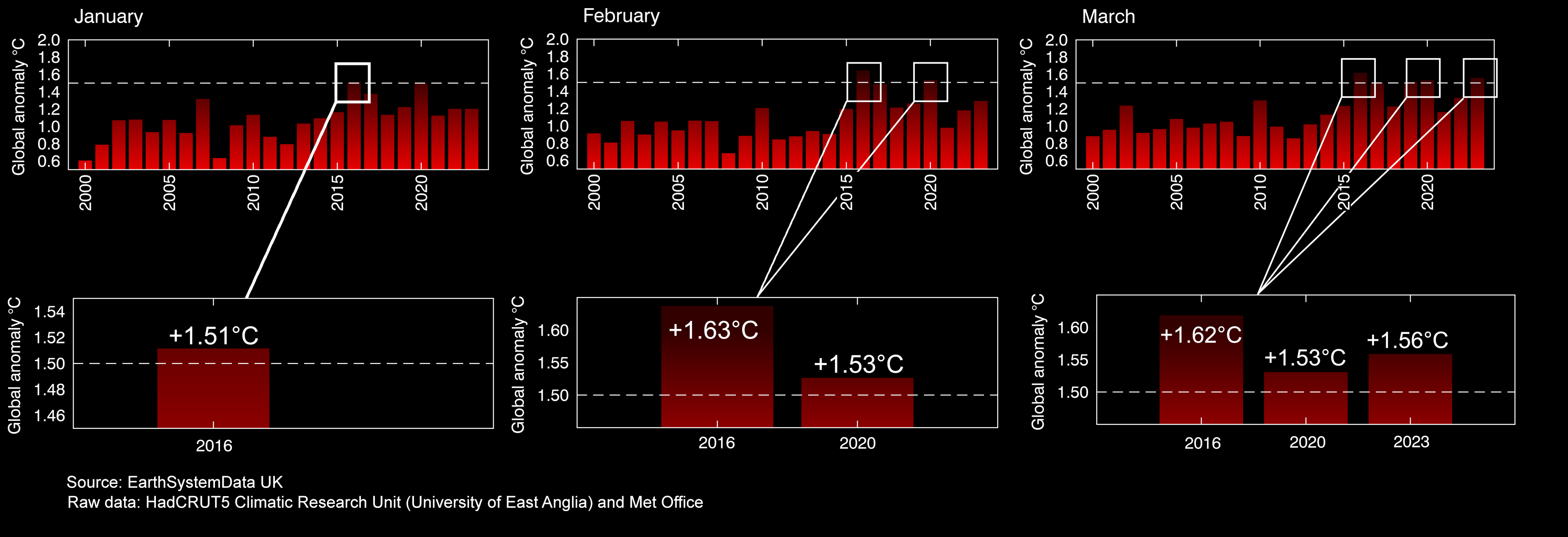Last Updated on: 22nd November 2023, 08:47 am
An innovative analysis of the renowned HadCRUT5 global temperature dataset reveals that a total of six months, including March 2023, have gone beyond the 1.5°C mark of global warming, which represents the threshold outlined in the United Nations Framework Convention on Climate Change (UN-FCCC) 2015 Paris Agreement.
The assessment, conducted by EarthSystemData UK, evaluated HadCRUT5 – a prominent global data compilation employed by the United Nations for monitoring global climate patterns – by recalibrating the data in relation to its pre-industrial average from 1850 to 1900. This recalibration aligns with the methodology employed by the United Nations to determine the 1.5°C threshold.
The months that have exceeded the 1.5°C warming milestone are as follows: January 2016 [+1.51°C], February 2016 [+1.63°C], March 2016 [+1.62°C]; February 2020 [+1.53°C], March 2020 [+1.53°C]; and March 2023 [+1.56°C]. These findings signify the initial extended periods during which the global temperature has surpassed the established UN-FCCC “safe warming limit.” However, they do not signify a formal violation of the legally binding target set by the Paris Agreement, which necessitates a multi-year average surpassing +1.5°C to confidently attribute the breach to human-induced causes.
“Nevertheless, we are observing the initial data points that will likely form the foundation of that extended breach. It serves as an unmistakable warning – as if the recurrence of climate catastrophes is not sufficient, the evidence is now right in front of us, in the form of numbers,” stated Dr. Craig Wallace, the analyst who conducted the study. “The years 2016, and to a certain extent, 2020, were influenced by pronounced EL Niño conditions, which elevated the Earth’s temperature and compounded the effects of carbon-driven warming caused by human activities. The recorded figure for March 2023 is exceptional since it occurred during the tail end of a La Niña phase, which actually cools the planet and partially offsets the human-induced warming. This suggests that the actual extent of human-driven warming in March was even higher than the reported +1.56°C.”



